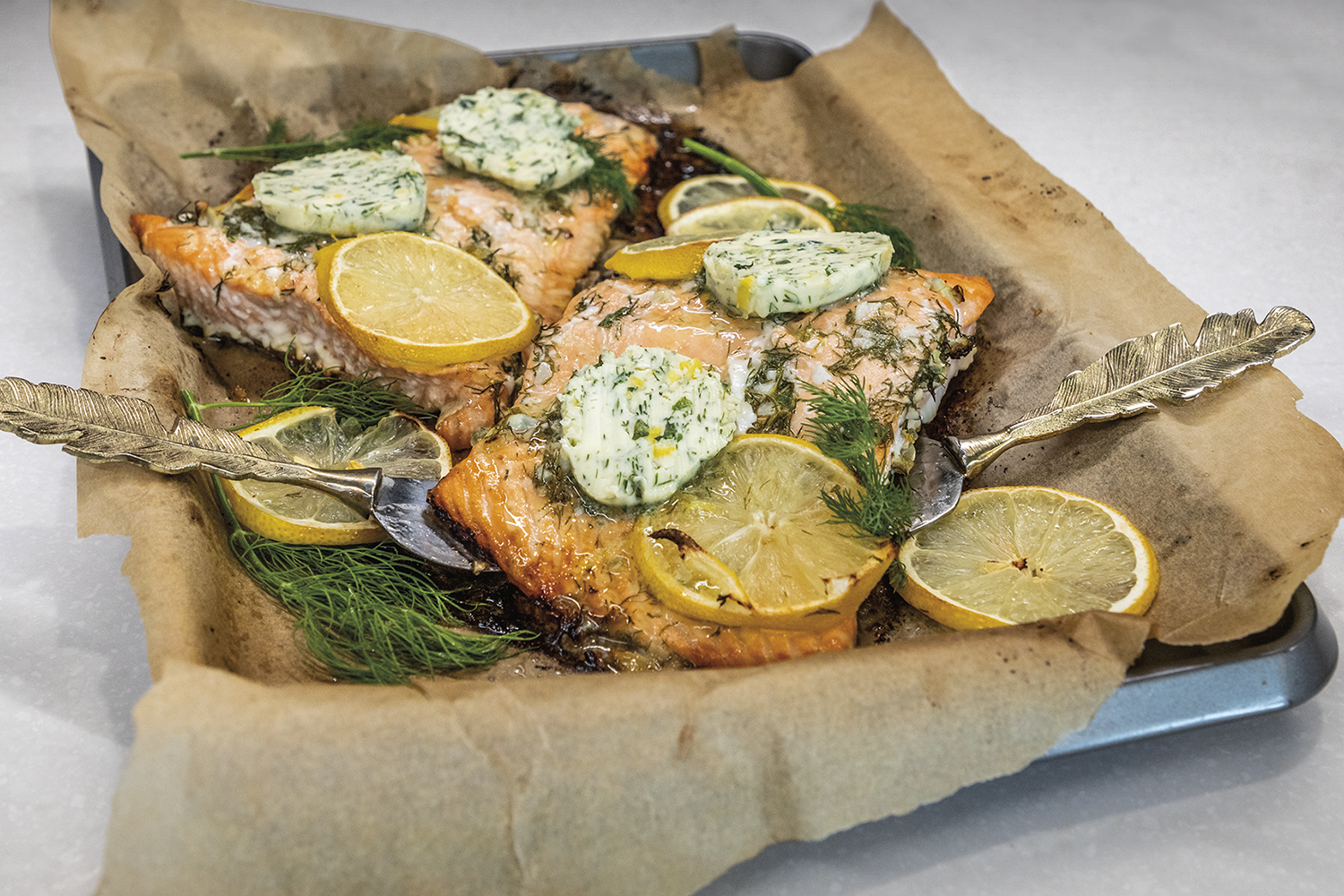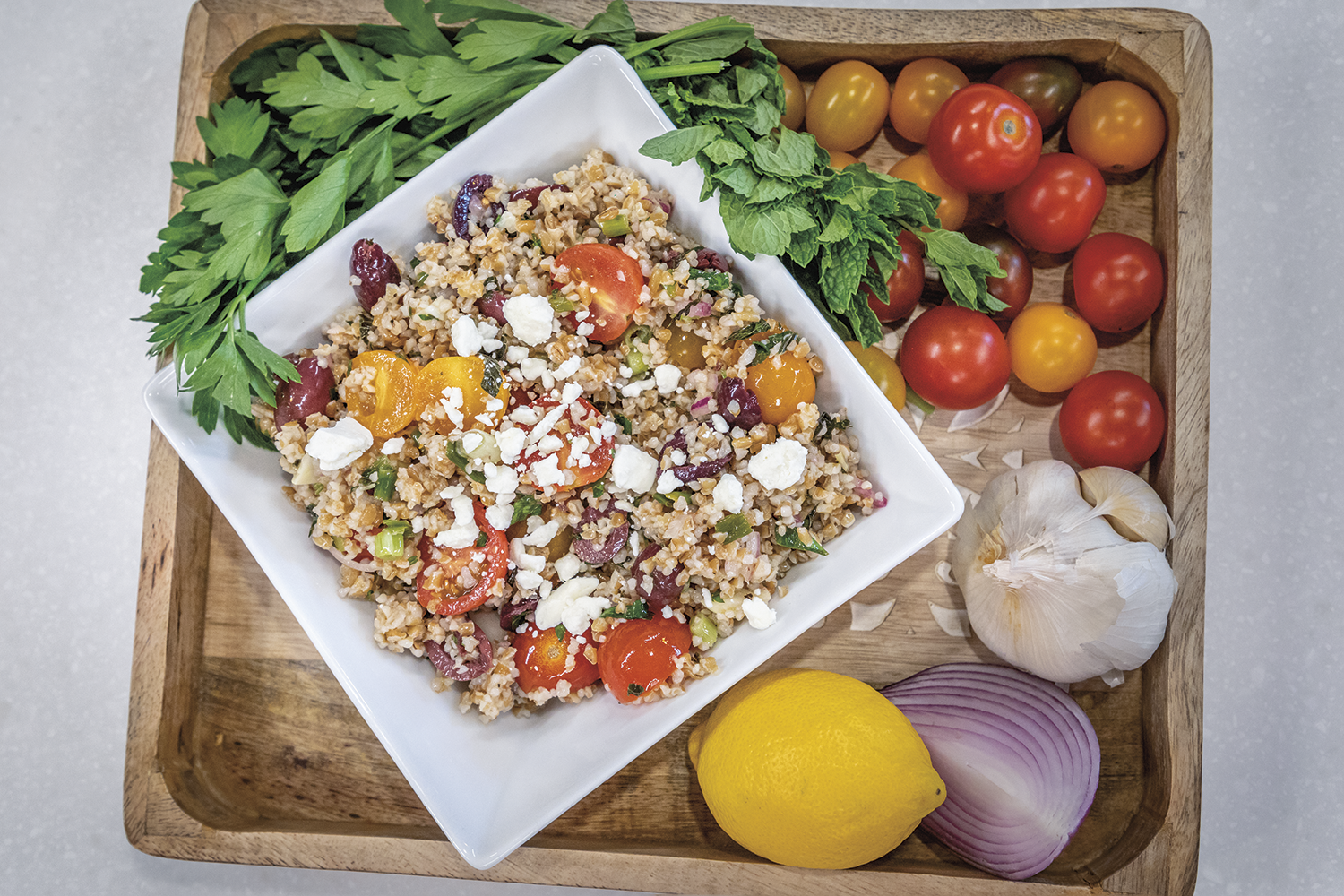“How long can you keep dried herbs in your cupboard?” the workshop participant asked.
I anticipated where this was going. I replied with a question.
“How long have your dried herbs been in your cupboard?” I asked.
“I got them for my wedding,” she replied.
After a dramatic pause, she added, “Forty years ago.”
Everyone laughed.
I’m quite sure her dried herbs added little flavor to foods at this point, although they are likely “safe.”
Dried herbs lose their potency through time, so use the “sniff test” every six months with your dried herbs and spices. If you notice little aroma upon sniffing, there will be little or no flavor.
Usually, dried herbs will last two to three years at good quality. Be sure to store them in a cool, dark cupboard in a tightly closed container.
GROWING HERBS
Fresh herbs grow well outdoors in summer months in North Dakota. Some people enjoy growing fresh culinary herbs, such as basil, mint, oregano, rosemary, chives and others, indoors year-round.
In cooler months, a sunny windowsill with exposure to about five hours of light per day is ideal. Herbs also will grow if they get 10 hours of fluorescent lighting daily. Use a warm and cool bulb in your grow light.
To grow herbs, you will need a container at least 6 inches deep with holes in the bottom (for good drainage), pasteurized potting mix and seeds or small plants from a garden shop.
Treat your potted herbs like houseplants. Water them regularly, but don’t overwater, which can lead to soggy roots. Snip the herbs often so they will grow full and lush. For best growth, use liquid fertilizer mixed with water as directed every week or two.
PRESERVING HERBS
Herbs can be preserved by drying them in a dehydrator, in an oven on low or in a microwave. Pick the herbs at their peak quality, rinse and pat dry.
• To air-dry, tie the leaves together with string and hang upside down in a well-ventilated, dark place, such as a cool basement.
• To dry in a food dehydrator, follow the manufacturer’s instructions, because the appliances vary.
• To dry in a microwave oven, place bunches of rinsed leaves between microwave-safe paper towels. Microwave on high for 30 seconds at a time, then cool. The leaves should crumble easily when dry.
Store the dried herbs in labeled, air-tight containers, such as glass jars. For best flavor, use home-dried herbs within one year.
Herbs can be frozen following these tips:
• Rinse and pat dry herbs, then place in freezer bags. Press out the air, then lay flat to freeze.
• Alternatively, place chopped herbs in ice cube trays, cover with water and freeze. Pop the ice cubes into labeled freezer bags. Add a cube or two to soups or stews to add flavor.
USING HERBS IN COOKING
Herbs add almost no calories, yet they provide distinctive flavors. You might use less salt in your recipes as a result, which is heart-healthy. Herbs get their characteristic aromas from chemicals known as essential or volatile oils. These oils are concentrated in the flowers, seeds, leaves, roots or throughout the plant, depending on the species.
To use fresh herbs in food preparation, rinse them well under running water and chop in tiny pieces to expose as much of their surface area as possible. With dried herbs, use a mortar and pestle to grind the herb into a powder.
Herbs vary by flavor strength, so be sure not to overdo the amount. No two herbs are exactly alike, so generalizing is difficult. The usual comparison is 2 teaspoons of fresh herbs equals a ¾-teaspoon of dried herbs equals a ¼-teaspoon of powdered herbs.
• Strongly flavored herbs include bay, rosemary and sage. About 1 teaspoon per six servings will suffice.
• Moderately flavored herbs include basil, dill, mint, marjoram and oregano. Use about 2 teaspoons for every six servings.
• Mildly flavored herbs include chives and parsley. These combine well with other herbs and can be used generously.
Timing is important, because herbs can lose some flavor during food preparation. Add fresh herbs close (10 to 15 minutes) to the end of cooking when making soups and stews. When adding herbs to cold foods, such as salads, add them a few hours ahead of time to allow the flavors to meld.
Add some flavor to your menus with herbs. See www.ag.ndsu.edu/fieldtofork and navigate to the “Resources” section and then “Herbs.”
Julie Garden-Robinson, Ph.D., R.D., L.R.D., is a food and nutrition specialist with NDSU Extension.

½ cup softened butter
2 T. fresh dill, chopped
½ tsp. garlic, minced
2-3 tsp. lemon juice
Salt and pepper, to taste
1 lb. salmon
2 T. olive oil
Prepare the herb butter by combining butter, dill, garlic, lemon, salt and pepper and form into a roll using plastic wrap. Wrap tightly and refrigerate for at least 1 hour, or freeze up to six months.
Season the salmon with salt and pepper on both sides. Place salmon skin side down on parchment-lined sheet pan and brush with olive oil. Bake at 350 degrees for 15-20 minutes, until the fish is no longer opaque and the thickest part flakes by fork. Optional: For a little more char, broil for 1-2 minutes. Top warm salmon with sliced compound herb butter.
Swap out the dill in the compound herb butter recipe with 2 T. of your favorite herbs. The butter acts as a sauce and pairs well with other meat and veggies, too. A chive butter on steak? Yes, please! A basil, parsley and mint butter atop a chicken breast or veggies for a Mediterranean flair? Yum!
Recipe adapted from NDSU Extension
Find more herb recipes at www.ag.ndsu.edu/fieldtofork and navigate to the “Resources” section and then “Herbs.”

1 cup bulgur (cracked wheat), prepared
¼ cup olive oil
¼ cup lemon juice
1 cup cherry tomatoes, halved
½ cup green onions or ¼ cup red onion, chopped
½ cup kalamata olives, halved
½ cup feta cheese
½ cup parsley, chopped
3 T. mint, chopped
Salt and pepper, to taste
Prepare bulgur to package directions. Set aside to cool. In a small bowl, combine olive oil, lemon juice and garlic. Mix tomatoes, onion, olives, feta and herbs into bulgur. Add oil mixture; toss to blend. Season with salt and pepper. Let stand at least 30 minutes to blend flavors.
Recipe adapted from NDSU Extension
Find more herb recipes at www.ag.ndsu.edu/fieldtofork and navigate to the “Resources” section and then “Herbs.”










